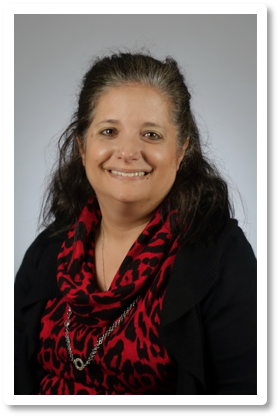Formulary Management for Biosimilars: 4 Payer Challenges
Biosimilar agents can help healthcare organizations offer patients more options for their care. So, what’s stopping payers from immediately adding them to their formularies?

Rubin

Payer organizations must consider a wide range of factors when deciding what drugs to add to their formularies, ranging from the economic to the ethical. In addition, positioning those drugs along a formulary’s tiers can be just as taxing.
When the Biologics Price Competition and Innovation Act was passed in 2010, more pharmaceutical companies started to develop biosimilar agents, drugs that are “highly similar” to previously-licensed biologic drugs. And these drugs hold great promise for lowering costs and improving patient outcomes for a wide range of medical conditions.
“Biosimilars provide an option to many patients for something that is less expensive but equally potent and therapeutic,” says Julie Rubin, PharmD, BCPS, director of clinical services for CompleteRx, a pharmacy management consultancy. “We’ve always had generics for many medications that people use every day. These are the generics of the biologic world. It offers healthcare a unique opportunity.”
Like Rubin said, biosimilars, in some ways, are like the generics of the modern world. As such, many payers may be looking to the generic model to help them assess formulary positioning for this new class of drugs. But she cautions that biosimilar agents offer some unique challenges that need to be carefully contemplated.
Here are four challenges for payers to consider as they assess formulary position of biosimilar agents:
1. Nomenclature. It’s said that a rose by any other name smells just as sweet. But a lack of standard nomenclature for biosimilars, Rubin says, means that it can be difficult for payers to differentiate between agents-and thus place them appropriately on their formulary.
“There’s been a push to add a suffix to the root of the originating drug to help identify the biosimilar,” she says. “But not everyone adheres to that standard. Others just use the trade name instead of the generic which can make it a little cleaner when you’re trying to pull it up.”
Rubin says that the healthcare industry coming up with a standard would make things easier across the board-to help payers determine what drugs belong where on the formulary and to help physicians choose the appropriate agents for patients.
2. Coding. A second challenge, Rubin argues, is one of coding. The Healthcare Common Procedure Coding System gives each drug a “J-code,” identifying the chemical name of the drug. Yet, several different biosimilars could be represented by a single j-code. And, as many of these drugs are new, some may not have even received a J-code yet-meaning that healthcare organizations will be forced to bill using a general code.
“We need to make sure that the coding for a biosimilar is correct so that reimbursement will ensue,” says Rubin. “The issue with codes can cause confusion with providers-they won’t know whether a payer is willing to accept the biosimilar or is still using the preferred originator as the drug of choice.”
Related: New Reimbursement May Level Playing Field for Biosimilars
3. Physician and pharmacy buy-In. Biosimilar agents are new-and in some cases, the jury may still be out on a particular agent’s efficacy under different healthcare contexts.
Not every biosimilar will be equivalent to the originating drug. You have to do your homework and really understand what they’ve been studied against,” Rubin says. “Is it all indications or just some indications? You need to know these things so you can figure out where the agent belongs on the formulary-and get that important buy-in from providers and pharmacists.”
Yet, she is optimistic-with the FDA creating the Purple Book, a guide that will show equivalencies between biologics and biosimilar agents, as well as which ones are interchangeable, she believes the industry will see increased adoption.
4. Legalities. The legal status of different biosimilars may be one of the biggest hurdles in assessing appropriate formulary positioning. Many biosimilar agents are taking years to get to market because of a variety of different legal battles.
“With so many of these drugs being caught up in legal red tape, it’s hard to get them on the formulary,” she says. “But, with time, we will see the rate of acceptance go up.”
Rubin says this is a very dynamic time in the biosimilar market-and she cautions those in the healthcare industry to pay attention and remain flexible.
“With so much changing so quickly, I think payers are constantly relooking at their formularies and readdressing it,” she says. “But, that said, I think we are starting to see a shift towards biosimilars. They are going to cause some competition with patients with better pricing and better opportunities. So, with time, you’ll see more payers engaging with providers to make sure these agents are part of practice options.”
Kayt Sukel is a science and health writer based outside Houston.